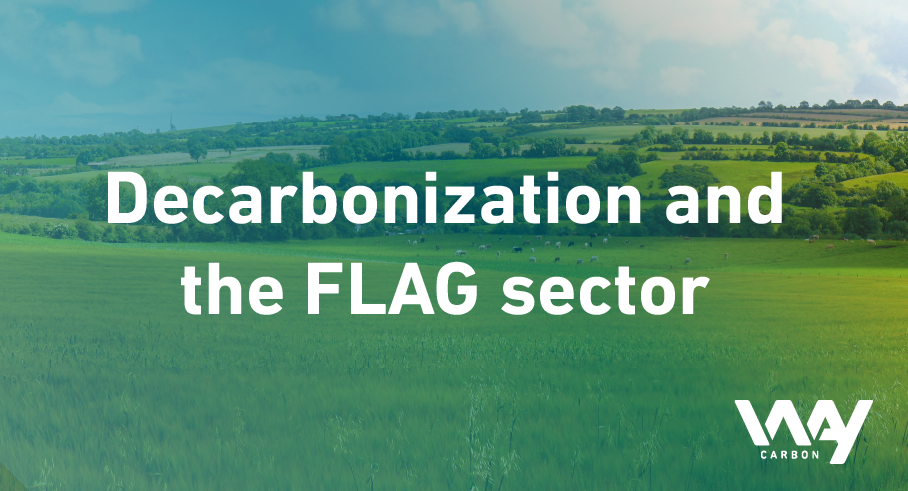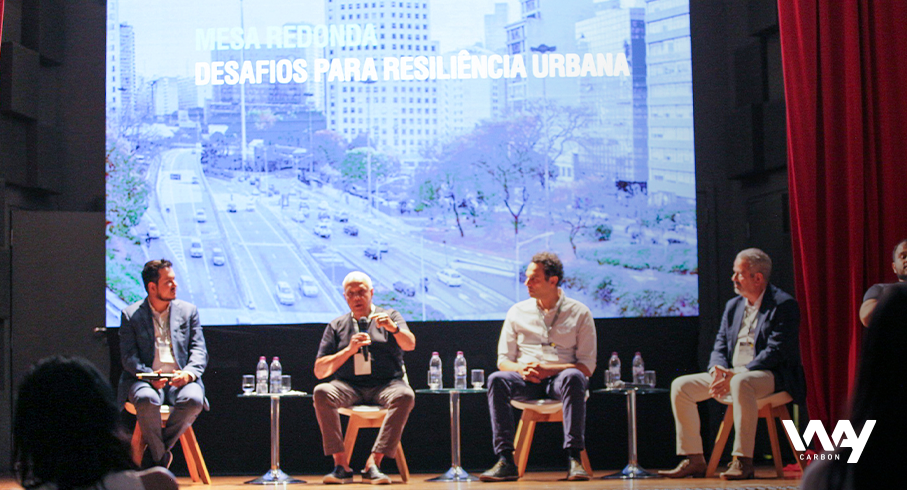Decarbonization targets for the Forest, Agriculture and Land Use sectors
Brazil is the third largest food producer in the world, after China and the United States, and the second largest exporter, with land and technology in the field to expand it even further. According to the Food and Agriculture Organization of the United Nations (FAO), it is the main hope to meet up to 40% of the additional future demand for food to be globally required in the next 30 years. In addition, it is home to the Amazon rainforest, which is crucial for absorbing greenhouse gas (GHG) emissions, and has suffered from increasing deforestation in recent years.
As we are speaking of greenhouse gas emissions, the Forest, Land and Agriculture sector, in English known as “FLAG”, generates about 73% of annual emissions of these gases in Brazil, with about 25% from agricultural production and 50% from other activities such as land use change and forests (SEEG, 2021)¹.
When addressing land use change, the activities that emit gases responsible for the greenhouse effect are those related to deforestation, forest degradation and land use change with losses in carbon stocks. A classic example is the conversion of forests into open new agricultural frontiers, releasing a large part of the supplies that were stored in the soil. In addition, there are emission sources that are not directly associated with the change in the activity carried out on the soil, such as emissions from enteric fermentation of ruminants, from manure in particular, swine and cattle, the fertilizers use, the degradation of harvest residues, soil flooding as a management practice for rice cultivation, among other related activities.
What are carbon removals?
The IPCC defines carbon removals as human activities that remove CO2 from the atmosphere and store it in durable form in geological reservoirs, terrestrial, organic, or in products. Currently, one of the most available forms of carbon removal is terrestrial. Some of the main examples of this are reforestation projects in tropical and temperate areas, which have good results in carbon removal and contribute to the balance of the natural environment with biodiversity. Activities that focus on the soil as a carbon sink gained special attention at the last COP27. Examples are: the optimization of Integrated Crop-Livestock-Forestry(ICLF), crop rotation and the implementation of Agroforestry Systems (AFS), among other nature-based solutions.
Despite the sector’s great contribution to global emissions, both the GHG Protocol and the SBTi had not yet defined how to quantify these emissions and removals, nor how would be the definition of goals for institutions that aim to contribute to global warming does not exceed 1.5°C and which aim to reach Net-zero.
SBTi FLAG initiative
Knowing the importance of the FLAG sector in meeting the goals of the Paris Agreement, the SBTi (Science Based Targets Initiative) published, in September 2022, a Guide with guidelines for setting a science-based target for emissions and removals of greenhouse gases (GEE) for the FLAG sector.
The main novelties of the document are listed below:
- Target horizon: defining short-term FLAG targets: 5-10 year horizon according to limiting warming to 1.5°C;
- Target definition: consider short-term FLAG reductions and removals: the Guide requires institutions to define both emissions reduction and removal targets (this is the first time that SBTi includes emissions removals in its targets and the quantification of removals was also contemplated for the first time in the recently launched GHG Protocol Land Sector and Removals Guidance). It is important to highlight these removals are different from “offsets” and require these companies to evolve in activities that function as carbon sinks (or reservoirs), in addition to promoting emission reductions. Removal activities included in the FLAG model only include actions taken at companies and in the supply chain that are within the company’s value chains. According to the guide, FLAG carbon removals cannot be used to achieve non-FLAG targets (for example: forest management removals cannot be used to achieve fossil fuel reduction targets). And biogenic removals should only be accounted for to meet FLAG targets;
- Deforestation goal: zero deforestation goals related to the main commodities must be defined by 2025 following the guideline of the Accountability Framework (AFi) initiative.
Who should have a FLAG target, when and what are the different approaches?
- Which companies should submit a FLAG target:
Companies belonging to the sectors of Forestry and Paper Production – Silviculture, Wood, Pulp and Paper, Rubber, Food Production – Agricultural and Food Production – Animal Source, Food and Beverage Processing, Food Retail and Basic Foods, Tobacco) or to any other sector whose total FLAG emissions in scopes 1, 2 and 3 together represent at least 20% of the total emission. It is important to highlight that FLAG emissions and removals are those related to agriculture (up to the farm gate, in other words, emissions such as enteric and fertilizer application are classified as FLAG), changes in land use and soil management, forestry (excluding processing).
- The timing to set a FLAG target is as follows:
Until April 2023 the definition of a FLAG target is voluntary and after that:
- Companies that set their SBTi target before January 2020 must set a FLAG target by December 31st, 2023;
- Companies that set their SBTi target after January 2020 and before April 30th, 2023 must add a FLAG target by December 31st, 2024;
- Companies setting their first SBTi target after April 30th, 2023 must set a FLAG target at the time of their submission.
- There will be two approaches to setting an emissions target:
The Guide defines two approaches to target setting. The sectoral target (absolute target) is more recommended for companies with different land use activities and for companies located on the demand side of the production chain. In other words, companies located in the middle and at the end of the production chain, which do not produce, but buy commodities that can be processed. Commodity targeting (intensity targeting) is best applied to companies located on the supply side of the production chain. It means that companies located at the beginning of the production chain and companies whose associated emissions are related to at least one of these commodities: beef, poultry, dairy products, corn, palm oil, pork, rice, soybeans, wheat, leather and wood; and representing at least 10% of total FLAG emissions. The Guide also mentions that SBT is working on a better definition of actors on the demand side and on the supply side, which will be presented in version 2.0 of the document.

Source: Adapted from Flag SBTi Guide
WayCarbon assists companies in quantifying emissions and removals following the guidelines in the new GHG Protocol Land Sector and Removals Guidance, assessing the potential for decarbonization and reduction and removal of FLAG emissions from a company in scopes 1, 2 and 3, contributing to the best approach for defining and achieving a FLAG target.
Glossary with the main terminologies used in the Forest, Agriculture and Land Use sector
Emission: release of a gas responsible for the greenhouse effect into the atmosphere
Enteric fermentation: degradation of fiber by the ruminal microbiota produces short-chain volatile fatty acids that are used as an energy source. In this fermentation process, gases such as CO2 and CH4 are produced, which are eliminated into the environment through eructation. The quality of the fiber ingested by the ruminant is what will determine the amount of energy lost in the form of methane gas during the fermentation process.
Emission source: process, activity or mechanism that releases greenhouse gases into the atmosphere
Removal: transferring a greenhouse gas from the atmosphere to storage in a non-atmospheric reservoir
Reservoir: physical reservoir or medium where a greenhouse gas or its constituent elements are stored
BIBLIOGRAPHIC REFERENCES
¹DO CLIMA, Observatório. Análise das Emissões Brasileiras de Gases de Efeito Estufa e suas Implicações para as Metas de Clima do Brasil 1970-2020. Sistema de Estimativas de Emissões e Remoções de Gases de Efeito Estufa (SEEG), 2021. Available at:: https://seeg-br.s3.amazonaws.com/Documentos%20Analiticos/SEEG_9/OC_03_relatorio_2021_FINAL.pdf. Accessed on November 1, 2022
Science Based Target Initiative.”SBTi’s FLAG Guidance 2022″. Available at: https://sciencebasedtargets.org/sectors/forest-land-and-agriculture. Accessed on November 1, 2022
“Hoisting the FLAG: the SBTi’s target-setting approach to land-intensive sectors goes live’. South Pole Blog. Accessed on November 1, 2022. Available at: https://www.southpole.com/blog/hoisting-the-flag-the-sbtis-target-setting-approach-to-land-intensive-sectors-goes-live
VIRI, Natalia. “Um padrão para botar ordem nos compromissos de net zero”. Capital Reset. Available at: https://www.capitalreset.com/um-padrao-para-botar-ordem-nos-compromissos-de-net-zero/. Accessed on November 1, 2022.













